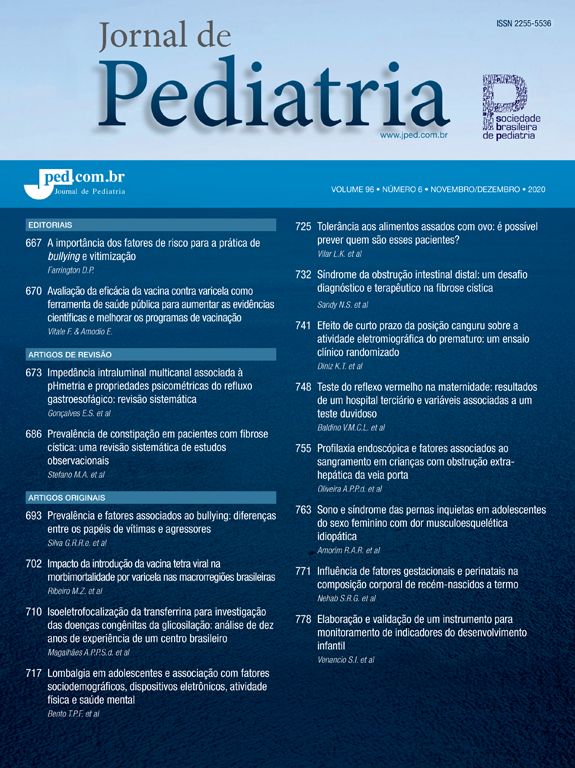The present study evaluated the incidence of hyperkalemia in premature babies born at the Hospital de Clínicas de Porto Alegre (birthweight < 1250 grams and gestational age < 32 weeks) during the first 72 hours of life in a one year period. The incidence of hyperkalemia was of 38.5% (potassium levels >6 mEq/l) and 15.4% with potassium levels subject to cardiac arrhythmia (> 6.7 mEq/l). The population was divided into two groups: group KN with potassium < 6 mEq/l (n=16) and group KE with potassium > 6 mEq/l (n=10). The hydroelectrolyte management and maintenance of neutral thermal environment was the same for both groups. Neither group received potassium in the first 36 hours of life. The KE group presented higher potassium levels during all the study. The mean birthweights of the groups were similar (KN = 963 gr; KE = 987 gr). The KN group presented a mean gestational age (29.3 weeks x 30.8 weeks) and Apgar Score in the first minute of life (3.18 x 5.7) significantly lower (p = 0.004 and p = 0,015 respectively) than the KE group. There were no significant differences between both groups in relation to the intraventricular hemorrhage, acidosis, hialine membrane disease, insulin level, glycemia, glycemia/insulin index, glomerular filtration rate, diurese, urinary potassium level, fractional sodium excretion, fractional potassium excretion and aldosterone tubular index. The level of aldosterone was significantly higher in the KE group (p = 0.029) within 24 hours of life (212.8 ng/dl x 110.2 ng/dl). It is suggested that none of the studied factors is responsible for the non-oliguric hyperkalemia of the very low birthweight newborn infant, stressing, however, that the serum potassium level must be carefully controlled in those infants.
O fator de impacto mede o número médio de citações recebidas em um ano por trabalhos publicados na revista durante os dois anos anteriores.
© Clarivate Analytics, Journal Citation Reports 2025
O CiteScore mede as citações médias recebidas por documento publicado. Mais informação
Ver maisSJR é uma métrica de prestígio baseada na idéia de que todas as citações não são iguais. SJR utiliza um algoritmo similar ao page rank do Google; é uma medida quantitativa e qualitativa ao impacto de uma publicação.
Ver maisSNIP permite comparar o impacto de revistas de diferentes campos temáticos, corrigindo as diferenças na probabilidade de ser citado que existe entre revistas de distintas matérias.
Ver mais







